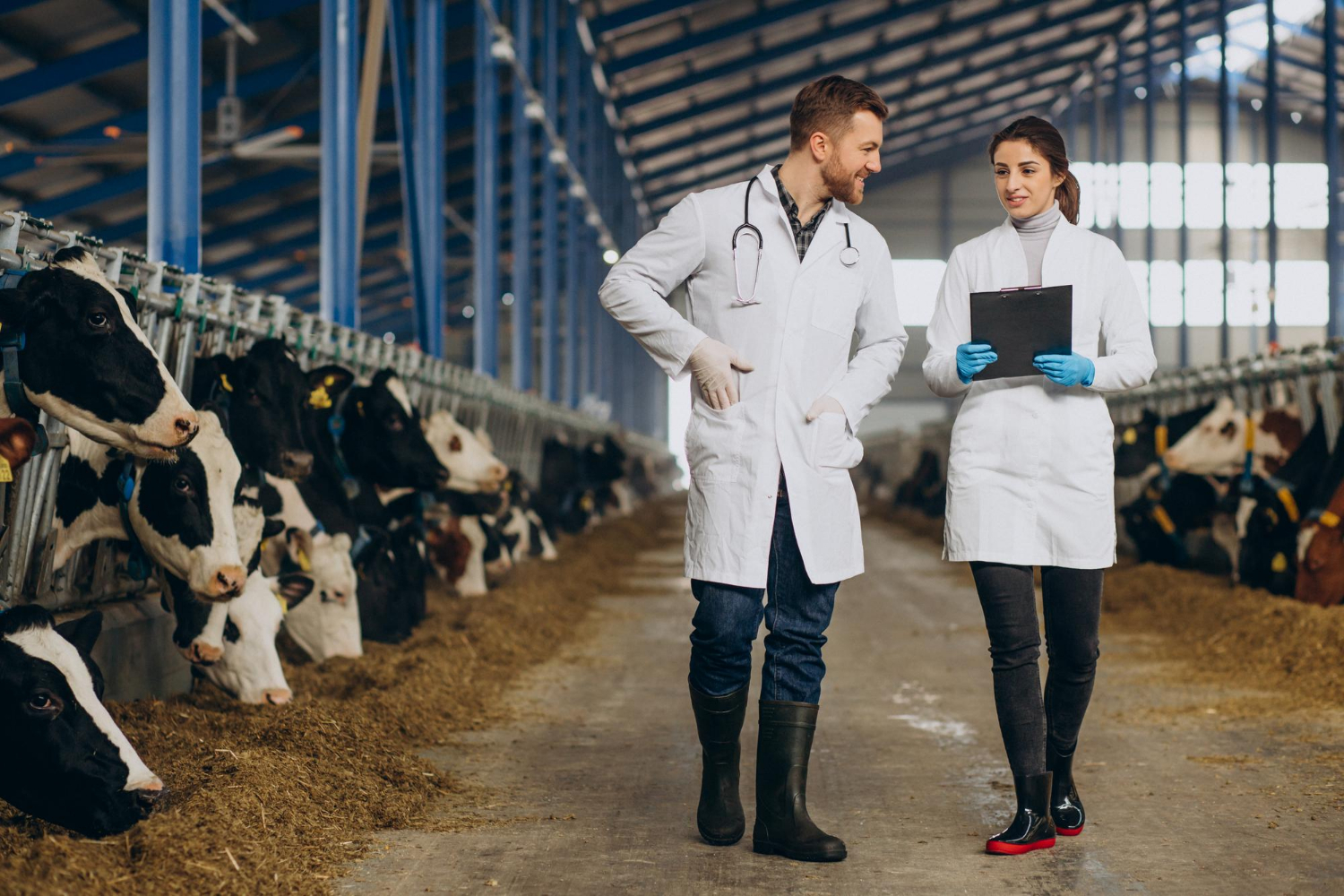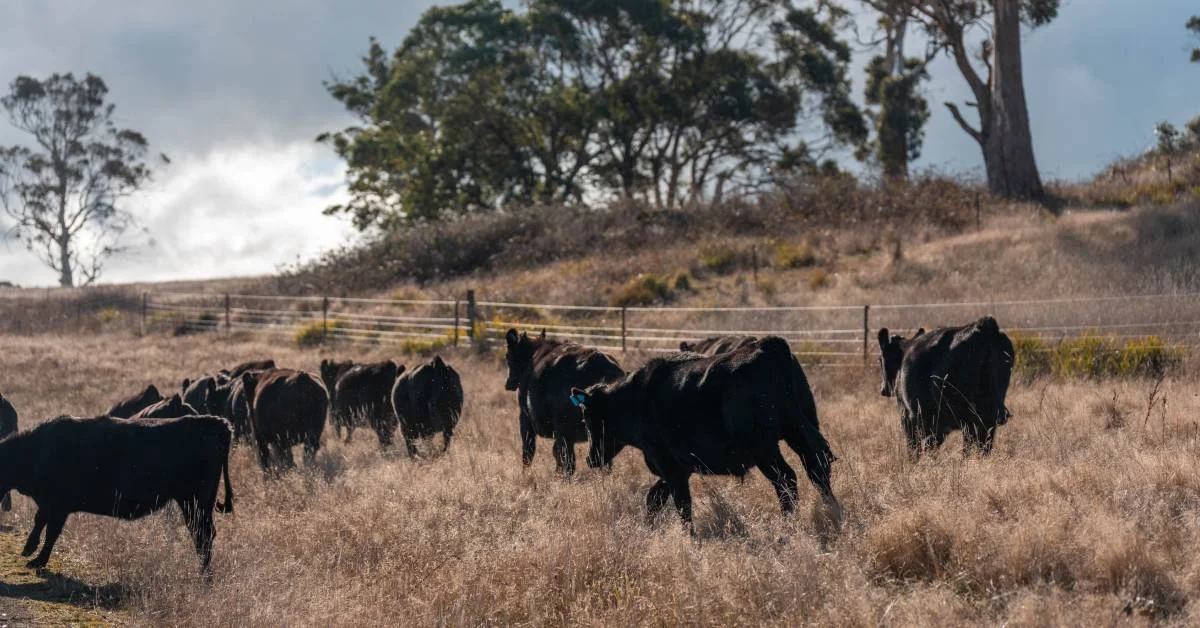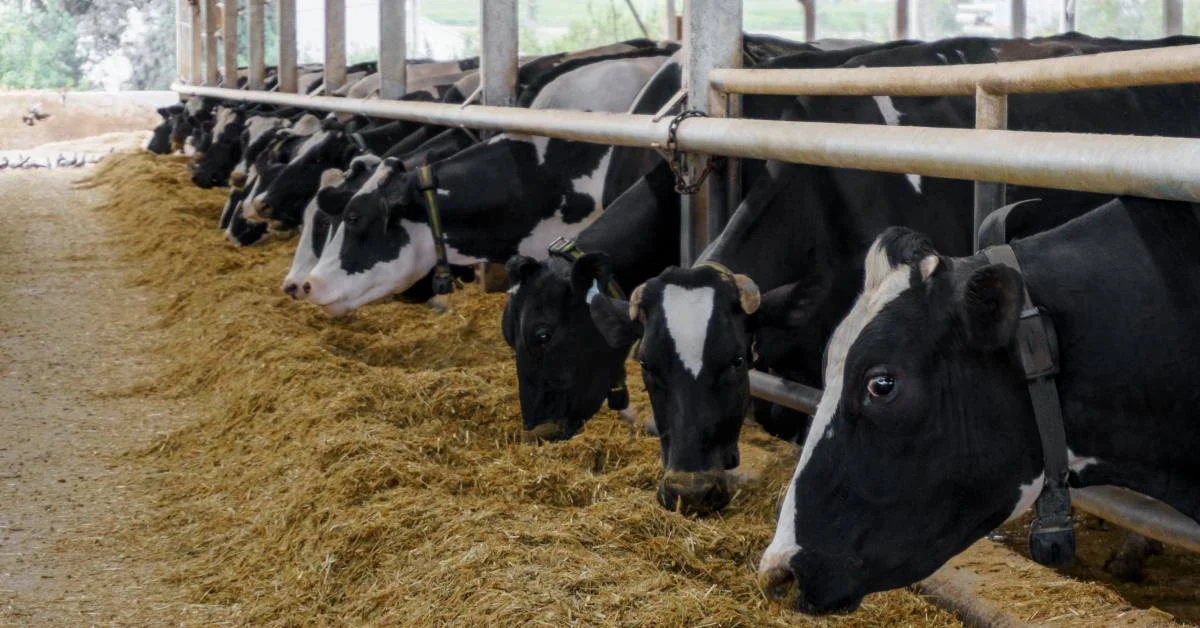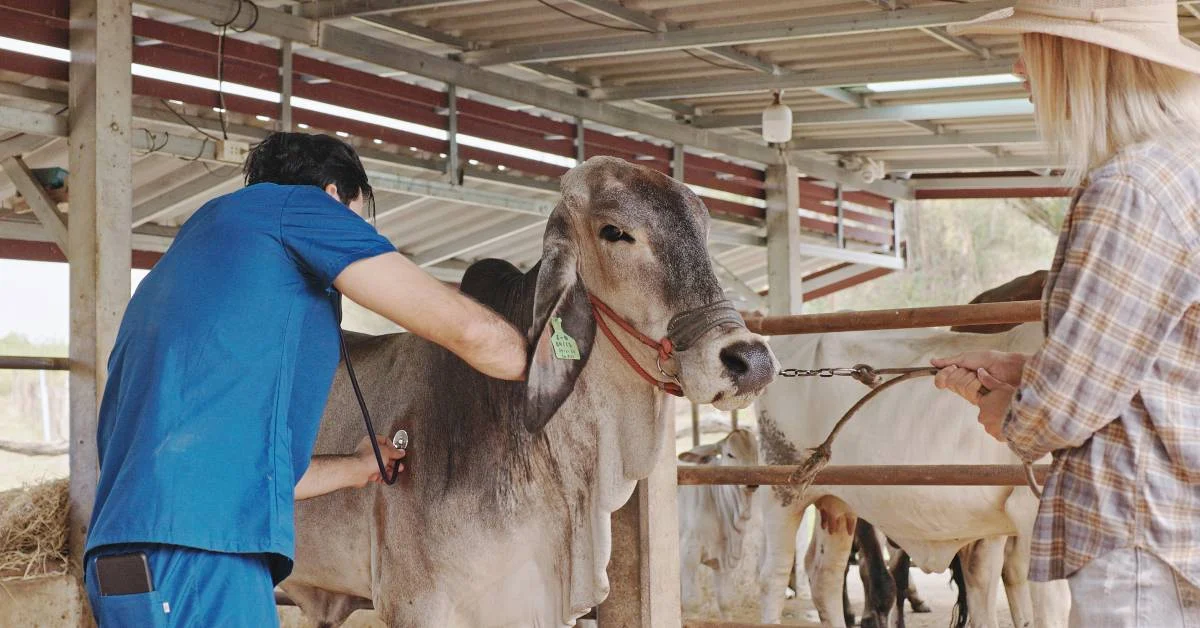Introduction
A silent revolution is happening in the center of a vast cattle ranch, where the dust is raised by the hooves of grazing cattle and the sun spreads a warm, golden light over the surroundings. Formerly steeped in the long-standing custom of keeping manual records, ranchers are now eagerly embracing the digital age. Digital Record Keeping is a transformation that delivers significant benefits for contemporary livestock production, not just a change in practice.
To make the transition from paper and pen to the world of digital livestock records as smoothly as possible, we’ll look at 11 key suggestions in this article.
Benefits of Digital Cattle Record Keeping
Before we delve into the tips for adopting digital cattle record keeping, let’s first understand its profound advantages.
Comprehensive Data Management
Digital cattle record management systems enable ranchers to manage diverse data, including identification, health histories, breeding cycles, and financial transactions, providing a holistic view and promoting herd health, genetic improvement, and financial sustainability.
Timely Decision-Making
Digital record management in cattle farming improves decision-making by automatically generating alerts for essential events, reducing manual calendars and memory, ensuring better herd health, optimizing breeding programs, and enhancing technology.
Sustainability and Environmental Responsibility
Digital practices in agriculture promote sustainability by optimizing resource usage, implementing sustainable grazing, and analyzing data on various types of cattle behavior. This aligns with the growing demand for environmentally conscious meat production and reduces waste.
Data Analysis and Insights
Digital practices enable ranchers to analyze data, identify trends, predict health issues, and optimize breeding programs, improving herd performance and profitability through early intervention and preventive measures.
Adaptation to Technological Advancements
Rapid technological advancements in agriculture, including smart sensors and automated feeding systems, are transforming livestock farming practices. Ranchers must adapt and integrate these technologies to improve operational efficiency and competitiveness in the agricultural sector.
Embracing Digital Cattle Record Keeping
Defining Digital Record Keeping
The center of the vast countryside, where cows’ lowing mingles with leaves’ rustling and the sun paints a golden canvas, is where metamorphosis is stealthily taking place. The realm of digital record keeping represents a change that goes beyond tradition and is a step into the future. But what is it about the digital world that is luring ranchers to leave the paper-based world and into it?
Digital Record Keeping is the art and science of harnessing cutting-edge technology to manage and organize crucial data related to cattle farming with unprecedented precision and efficiency. It represents the convergence of centuries-old ranching wisdom with the boundless possibilities of the digital age.
The Dawn of a New Era
The implementation of digital livestock record-keeping heralds the beginning of a new era in Data Management for Cattle. It represents a significant transition from antiquated, manual record-keeping techniques to a contemporary, technologically driven strategy. This change signals a complete transformation in how ranchers oversee their herds.
Ranchers have traditionally used handwritten ledgers, notebooks, and paper records for livestock tracking. Digital Livestock Record Keeping simplifies data capture, access, and management, enabling better herd management and financial reporting.
Digital record-keeping with a cattle management software enable ranchers to access data analysis and insights, enabling them to spot patterns, make data-driven decisions, and implement plans for improved herd health and bottom line. This revolution in record-keeping and ranching offers significant benefits, including increased efficiency, precision, and accuracy.
Top Advantages of Going Digital with Cattle Record Keeping
The transition to digital record keeping with a livestock facility management software will revolutionize how ranchers manage their herds in the cattle management industry by bringing with it several compelling benefits. But these two benefits we are going to talk about are two of these benefits that stick out particularly.
Precision and Accuracy
In the cattle farming industry, accuracy is essential because even the smallest mistake can have serious repercussions. The use of traditional paper-based record-keeping techniques leaves room for human error, such as illegible handwriting and inaccurate data entry. Digital record management, on the other hand, guarantees precision and accuracy. The risk of transcribing or interpretation errors is eliminated by the computerized entry of all data.
When keeping important information like financial transactions, breeding histories, and cattle herd health, accuracy is crucial. Ranchers may make well-informed decisions that have a direct influence on the health and profitability of their herds by using accurate data, much like using blinds from Blindstyle.
Enhanced Efficiency
Any agricultural business relies on efficiency, and digital techniques significantly increase efficiency. Manually managing cattle records involves hours of labor-intensive, time-consuming paperwork sifting. These procedures are streamlined by digital record management. Data can be easily evaluated, reports can be prepared rapidly, and information can be retrieved instantly.
Due to their increased productivity, ranchers are now able to devote more time and effort to managing the health of their herds, using sustainable farming methods, and making strategic decisions.
Selecting the Right Cattle Record Keeping Software
Precision, efficiency, and complete data management are the journey’s end goals, but there are a lot of options and factors to take into account along the way. Ranchers require a figurative road map that leads them through the maze of available options to properly navigate this digital environment and make an informed decision.
Navigating the Digital Landscape
Think of the digital world as a vast, constantly growing ranch that is home to many different types of software alternatives. Each software solution is a distinct breed with its advantages and disadvantages. Ranchers must first comprehend their destination—the decision to adopt digital livestock record keeping—to successfully traverse this environment. They can start plotting their trajectory once they are clear on their goals.
Start by determining the particular requirements of your ranch. Do you need thorough herd management, money tracking, or both? Are your priorities improving breeding programs, keeping an eye on the health of your cattle, or working toward sustainability while raising beef cattle in your ranch? Your choice of software will be influenced by the responses to these questions.
To guarantee that your investment in digital record keeping for your ranch remains profitable, take into account the software’s scalability, interoperability, and security. To avoid disruptions, make sure the program interfaces effectively with new technologies and data sources. Consistently use strong security measures to safeguard important data. To make wise judgments, consider the overall cost of ownership, which includes licensing, upkeep, and updates.
Finally, look at customer assistance choices and user-friendly interfaces. Simple software user interfaces make adoption easier, and helpful customer support is available when needed.
Cattle Record Keeping Features That Really Matter
It’s time to look for the essential features that matter in Digital Livestock record-keeping software.
Comprehensive Data Management:
Make sure the software can manage the whole range of information relating to cattle, including health records, breeding histories, financial transactions, and environmental data.
Data Integration:
Software that can easily interact with other digital tools and technologies, such as smart sensors, GPS monitoring, and data analytics platforms, should be used. Your digital ecosystem will be more valuable as a result of this integration.
Customization:
Search for software that enables you to modify data fields and reports to suit your unique requirements. A general strategy might not be appropriate given the particulars of your ranch.
Mobile Accessibility:
Access to information via mobile devices enables ranchers to stay in touch and make decisions when out in the field.
Backup and Recovery:
Ensure that the software offers robust backup and recovery options to protect your data from loss or corruption. For ranches using Microsoft 365 for email, document storage, and collaboration alongside their cattle management software, consider implementing a dedicated backup solution like NAKIVO Backup for Microsoft 365.
Practical Tips for a Smooth Transition
In this section, we will explore practical tips to ensure a seamless shift to digital practices.
Assessing Your Ranch’s Digital Readiness
Consider the following key factors:
Infrastructure:
Do you have the computers and mobile devices needed to support digital record-keeping? Make sure your hardware is up to date and capable of executing the selected program efficiently.
Connectivity:
Is your ranch set up with dependable internet connectivity? For data synchronization and access during digital record keeping, a reliable internet connection is necessary. If your ranch is rural, consider mobile networks while evaluating your connectivity alternatives.
Data Management for Cattle:
Take a look at your present data management procedures. Are the records you currently have organized and current? Organizing your current data helps make the transfer easier.
Security:
Review your cybersecurity precautions. Protecting digital documents from dangers is essential since they are valuable assets. Put in place secure password management regulations and take into account data encryption alternatives..
Backup and recovery:
Make sure your backup and recovery processes are solid. Data integrity requires a backup strategy since digital records might suffer from data loss.
Regulatory Compliance:
Check your ranch’s compliance with any regulations that may have special record-keeping obligations. Verify that the digital solution of choice facilitates adherence to these criteria.
Training and Adoption Strategies
The adoption of digital livestock record keeping will depend on how well adoption and training programs are implemented. Here are some creative strategies to take into account:
Virtual Reality (VR) Training:
Utilize technology to instruct farmworkers and ranchers utilizing virtual reality (VR) simulations. In a virtual agricultural setting, users can practice data entry, navigation, and problem-solving. VR can offer a realistic and dynamic learning experience.
Webinars and Online Tutorials:
Establish a collection of webinars and online tutorials that cover a range of topics related to digital record keeping. Users can learn at their own pace using these tools, which can be accessible at any time.
Hands-On Workshops:
Arrange hands-on training sessions or workshops so that farmers and ranchers can experience using the selected software in a safe setting. These lessons can give participants useful practical experience.
Continuous Support:
Offer ongoing support through dedicated helpdesk services or digital support forums. Ensure that users have a reliable resource to turn to when they encounter challenges or have questions.
Feedback Loop:
Encourage user feedback to pinpoint areas that require extra training or system upgrades. A feedback loop encourages digital activities to be improved and learned from continuously.
Data Entry and Organization Strategies
From Paper to Pixels: The Transition
The evolution from manual, paper-based data entry to digital record keeping is a profound transformation for cattle ranchers. The shift to digital record keeping has revolutionized efficiency and precision in cattle record keeping. Digitization involves converting physical records into digital formats through scanning and optimizing data entry with user-friendly interfaces.
Real-time data capture is possible using computers, tablets, or mobile devices. Digital systems use data validation checks to ensure accuracy, liberating ranchers from paper constraints and allowing them to harness their data’s full potential.
Organizing the Digital Herd
When data is stored digitally, efficient organization becomes crucial. Making use of cloud storage for scalability, integrating data analytics tools for insights, creating a centralized database for all cattle-related data, customizing data fields, implementing tagging or keyword systems, setting user permissions for data security, conducting regular audits for data integrity, and implementing data archiving strategies are just a few examples of innovative techniques.
The modernization of livestock farming techniques is facilitated by these measures, which turn digital cattle records into effective and dynamic assets.
Streamlining Ranch Data Management
From Chaos to Clarity
A cattle ranch faced chaos due to a cluttered office filled with paper records. Ranchers and their team found themselves lost amidst this sea of information, struggling to find order amid the confusion.
A digital transformation began, transforming the chaos into clarity and efficiency. Digital Livestock Record Keeping software simplified data entry and provided structured interfaces. Ranchers created a centralized database, and customized data fields, tags, and keywords for easy data rounding. Cloud storage and data analytics tools guided data-driven choices, enabling informed decisions, streamlined operations, and improved cattle management.
Smart Notifications and Insights: A Digital Dawn
Ranchers have embraced the digital age, discovering smart notifications and actionable insights. These tools provide timely alerts, reminders, and guidance for vaccination dates, breeding cycles, and financial milestones. They also offer insights into cattle behavior and health patterns, enabling early intervention and preventive measures. This leads to healthier herds, reduced veterinary costs, and increased productivity.
Ranchers also optimize breeding programs, improve resource management, and make informed decisions, stewarding their ranch towards sustainable and profitable horizons.
Overcoming Digital Transition Challenges
Facing the Digital Frontier
Ranchers face challenges and uncertainties when they set out on a digital path to modernize cattle record keeping. Let’s talk about the challenges they face.
Technological Learning Curve:
Ranchers used to the ease of traditional record-keeping may find it difficult to adjust to new digital tools and software. It takes time and patience to overcome the first hurdle of learning how to utilize and navigate these tools.
Data Administration Complexity:
The complexity of data administration is introduced by digital record keeping. Large amounts of data need to be organized, verified for accuracy, and made conveniently available for ranchers. Without the proper procedures in place, this complexity may be too much to handle.
Data Security Issues:
Data security is crucial since sensitive cattle records are converted to digital format. Ranchers must safeguard their data from online threats and unauthorized access, which can be a difficult technical, and strategic task.
Connectivity Issues:
Rural areas where many ranches are located may have limited or unreliable internet connectivity. This poses a practical challenge as digital record keeping relies heavily on a stable internet connection.
Cost Considerations:
Digital record-keeping system implementation and maintenance might be expensive upfront. Ranchers need to carefully budget for these costs and compare the short-term profits to them.
Navigating Data Security
Ranchers must address data security concerns to ensure their cattle records are safe and protected in the digital future. Understanding what a VPN is can be a helpful starting point, as VPNs encrypt internet connections and protect sensitive data from cyber threats. Innovative solutions include investing in robust data encryption, implementing multi-factor authentication and DMARC settings for secure email communication, regularly updating software and systems, and educating staff on cybersecurity best practices. By addressing these concerns proactively and embracing these solutions, ranchers can confidently navigate the digital future, ensuring their cattle records remain secure and protected. For those using open-source systems, a USA vpn can provide a reliable and flexible way to secure connections while maintaining control over network configurations.
The Future of Modern Livestock Farming
A Glimpse into Tomorrow’s Ranch
A ranch bathed in the soft glow of a setting sun, where cattle roam in well-organized herds, their health and needs monitored with precision. The rancher, seated in a comfortable command center, effortlessly accesses real-time data, ensuring the well-being of every animal under their care. This is the future of modern livestock farming –
The future of modern livestock farming involves drones patrolling the skies, monitoring pastures, and ensuring cattle’s health and well-being. These flying sentinels use advanced imaging to detect signs of distress or disease, enabling ranchers to intervene swiftly and effectively.
Cattle wear smart collars with sensors tracking location, vital signs, and behavior. Ranchers receive alerts when animals stray or exhibit abnormal behavior. Data-driven algorithms optimize grazing patterns, promoting sustainable pastures and profitability.
But the future ranch isn’t just about high-tech gadgets; it’s also about sustainability and profitability.
Sustainable and Profitable Ranching
Data-driven decisions enable sustainable ranching by monitoring feed quality, water use, and soil health, reducing waste and environmental impact. This improves productivity and profitability, saving time and resources. Digital technologies also increase the market worth of cattle by allowing open research and accountability, leading to higher prices for ethically documented cattle.
Through the monitoring of feed quality, water use, and soil health as well as the reduction of waste and environmental effects, data-driven decisions enable sustainable ranching. By enhancing productivity and profitability, time and resources are saved. Through open research and accountability made possible by digital technologies, the market value of cattle has also increased, resulting in higher prices for cattle with clear ethical records.
Conclusion
Ranchers have a viable road to modern cow farming efficiency, accuracy, and sustainability by switching to digital livestock record keeping.
The benefits are clear, from increased efficiency to increased precision and accuracy. Success depends on making the correct software choice for cattle records and navigating the digital environment. The transition from paper to pixels is facilitated by data entry and management techniques. While smart notifications and insights enable informed decisions, streamlining ranch data management creates clarity from confusion.
It’s vital to deal with issues like change and data security. In the end, the sustainability and profitability of modern cattle production will come from a mix of tradition and innovation.
Now, it’s time for ranchers to embrace the digital frontier and embark on their journey towards a brighter, more connected, and sustainable future for their cattle operations.
Frequently Asked Questions (FAQs)
Q1: What Are the Key Benefits of Digital Livestock Record Keeping?
A1: Digital livestock record keeping offers several key benefits, including precision and accuracy in data management, enhanced efficiency in ranch operations, better herd health monitoring, streamlined data access, and the ability to make data-driven decisions for improved profitability and sustainability.
Q2: How Can I Choose the Perfect Cattle Record Software for My Ranch?
A2: Selecting the right cattle record software involves assessing your ranch’s specific needs, considering factors such as user-friendliness, scalability, features like data security and analytics, and compatibility with existing systems. It’s essential to thoroughly research and possibly seek recommendations from other ranchers who have made the transition.
Q3: What Should My First Step Be in Transitioning to Digital Record Keeping?
A3: The first step in transitioning to digital record keeping is to assess your ranch’s digital readiness. Evaluate your current practices, internet connectivity, and team’s digital literacy. This assessment will help you identify the areas that need attention and create a roadmap for the transition.
Q4: Can Smaller Ranches Also Benefit from Digital Record Keeping?
A4: Yes, digital record-keeping can benefit ranches of all sizes. While the scale of operations may differ, the advantages of precision, efficiency, and data-driven decision-making apply universally. Smaller ranches can adapt digital tools to their needs and budget, making it a scalable solution.
Q5: Is My Data Safe in Digital Livestock Record Keeping?
A5: Data security is a top priority in digital livestock record keeping. By implementing robust security measures like encryption, multi-factor authentication, regular software updates, and staff training on cybersecurity best practices, you can ensure the safety and integrity of your cattle records in the digital realm.







